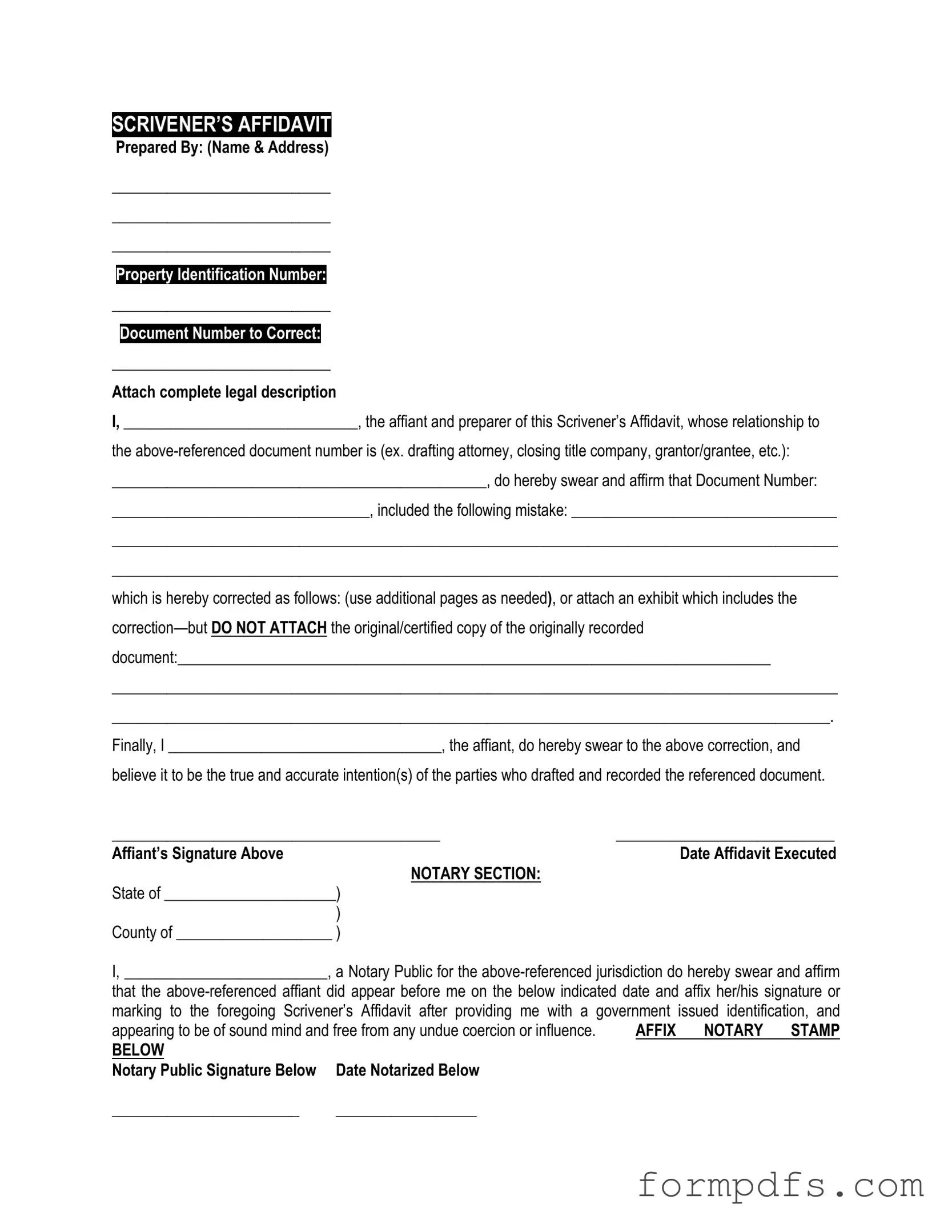What is a Scrivener's Affidavit?
A Scrivener's Affidavit is a legal document used to correct or clarify errors in a previously executed document, such as a deed or contract. It is often used when there are minor mistakes, such as typos or incorrect descriptions, that need to be addressed without altering the original intent of the document. This affidavit serves as a formal declaration that explains the intended meaning and rectifies any discrepancies.
Who typically uses a Scrivener's Affidavit?
Individuals, businesses, or organizations that have executed legal documents may find a Scrivener's Affidavit useful. It is commonly utilized by property owners, attorneys, and title companies when discrepancies arise in property deeds or related documents. The affidavit helps ensure that the public record accurately reflects the parties' intentions.
What information is included in a Scrivener's Affidavit?
A Scrivener's Affidavit typically includes the following information: the names of the parties involved, the date of the original document, a clear description of the errors, and the corrected information. It may also contain a statement affirming that the changes do not alter the original intent of the document. The affidavit must be signed and notarized to be legally binding.
Is a Scrivener's Affidavit legally binding?
Yes, a Scrivener's Affidavit is legally binding once it is properly executed. This means it must be signed by the appropriate parties and notarized. Once filed with the relevant government office, it becomes part of the public record, ensuring that the corrections are acknowledged and enforceable.
How do I prepare a Scrivener's Affidavit?
To prepare a Scrivener's Affidavit, begin by gathering the original document and identifying the errors that need correction. Clearly outline the mistakes and provide the accurate information. You can find templates online or consult with a legal professional to ensure that the affidavit meets all necessary requirements. After drafting, have the document signed in the presence of a notary public.
Where do I file a Scrivener's Affidavit?
The filing location for a Scrivener's Affidavit depends on the type of document being corrected. Generally, it should be filed with the same office where the original document was recorded, such as the county clerk's office or the land records office. Check with your local office for specific filing instructions and any applicable fees.
Can a Scrivener's Affidavit be contested?
While a Scrivener's Affidavit is intended to clarify and correct mistakes, it can potentially be contested. If a party believes that the corrections alter the original intent or that the affidavit was executed improperly, they may challenge it in court. However, as long as the affidavit is accurately prepared and filed, it generally holds significant weight in legal proceedings.
